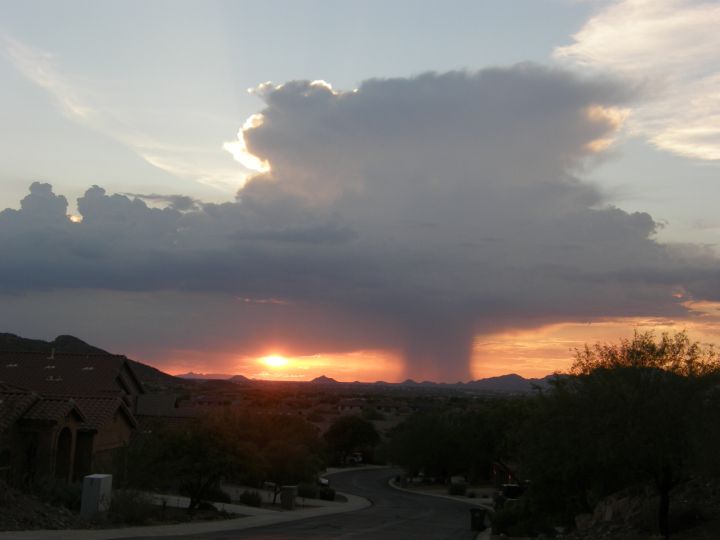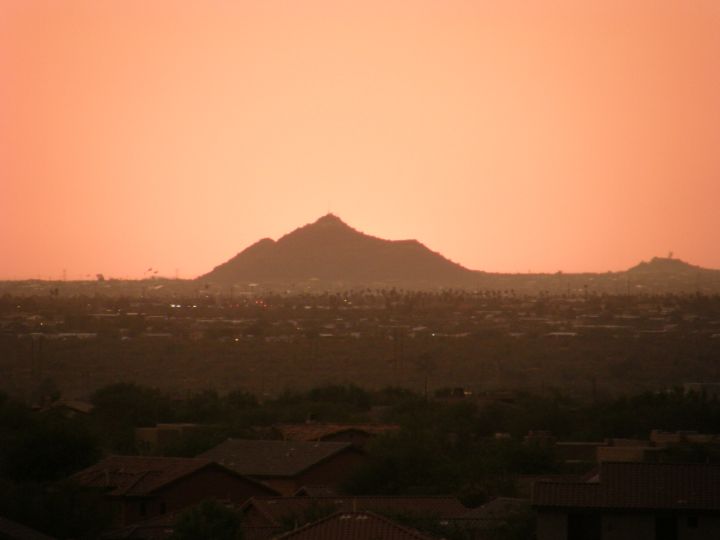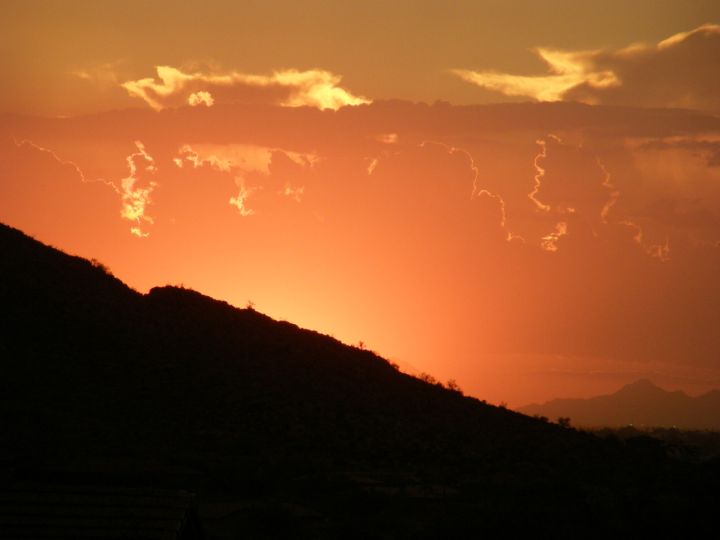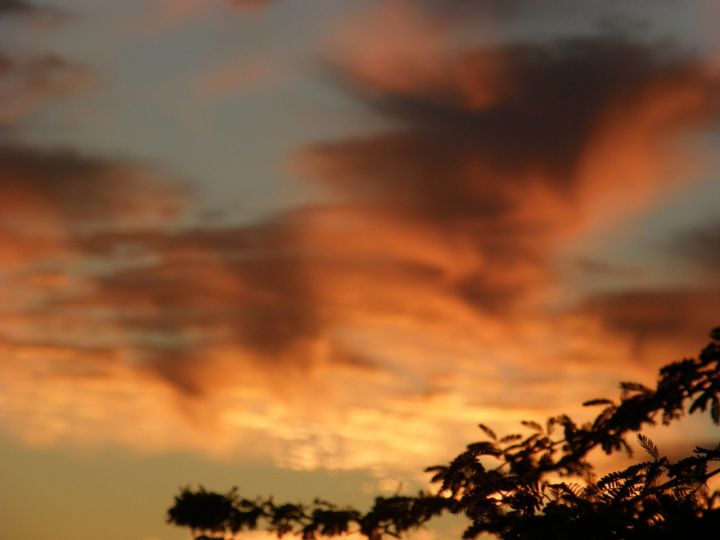Blue skies and Red Sunrises and Sunsets
I took these two imges of the setting sun along the coast of Croatia during the summer of 2017. What is immediately evident on the photograhs is the reduction of the brightness of the sun's image due to the passage of the light through the lower, thicker layers of the Earth's atmosphere.
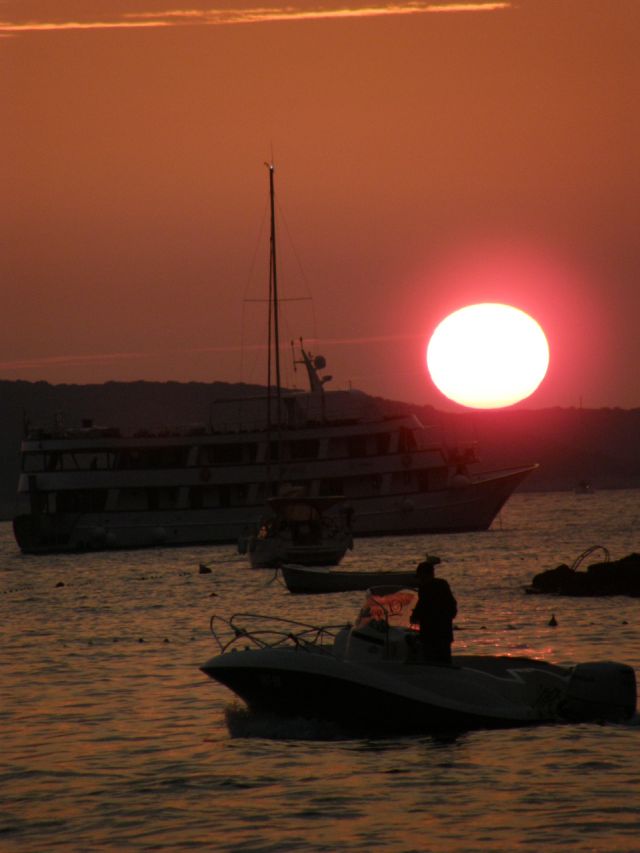

White light consists of all the colors of the spectrum combined. This white light travels through the vacuum of space without separation or distortion, but when it enters the Earth's atmosphere it is subjected to several effects created by the molecules of the air itself and the tiny particles suspended in the air. One such process is scatter whereby the shorter wavelengths of visible light (the blues) are scattered more than the longer wavelengths (the reds). Not surprisingly, colors intermediate to these wavelengths are scattered intermediate amounts. This scattering changes the colors of the sky that we see in different portions of the sky and depletes, by greater or lesser amounts, the amount of light that makes it through. The one picture below shows several of these effects efficiently and nicely.
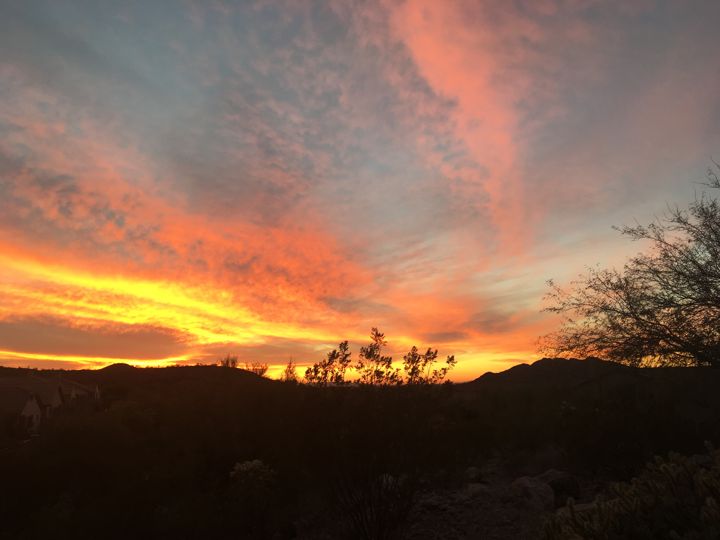
The above image shows clouds at two levels near sunset, as photographed from the street in front of my home. The cloudless sky is blue; the farther from the sun the deeper is the shade of blue. The lower level of clouds are colored red whereas the upper level clouds are colored yellow. The cloud levels differ in color because near sunset the light that illuminates the lower clouds went through lower levels of atmosphere that contain air at higher pressure (and hence more air) and air that contains more particles from the earth's surface than the cleaner and less dense air aloft. Consequently the lower clouds are illuminated with red light whereas the upper clouds are illuminated with yellow light.
All the images that follow show scatter effects, but there will not be any discussion of individual photographs. Just enjoy!
